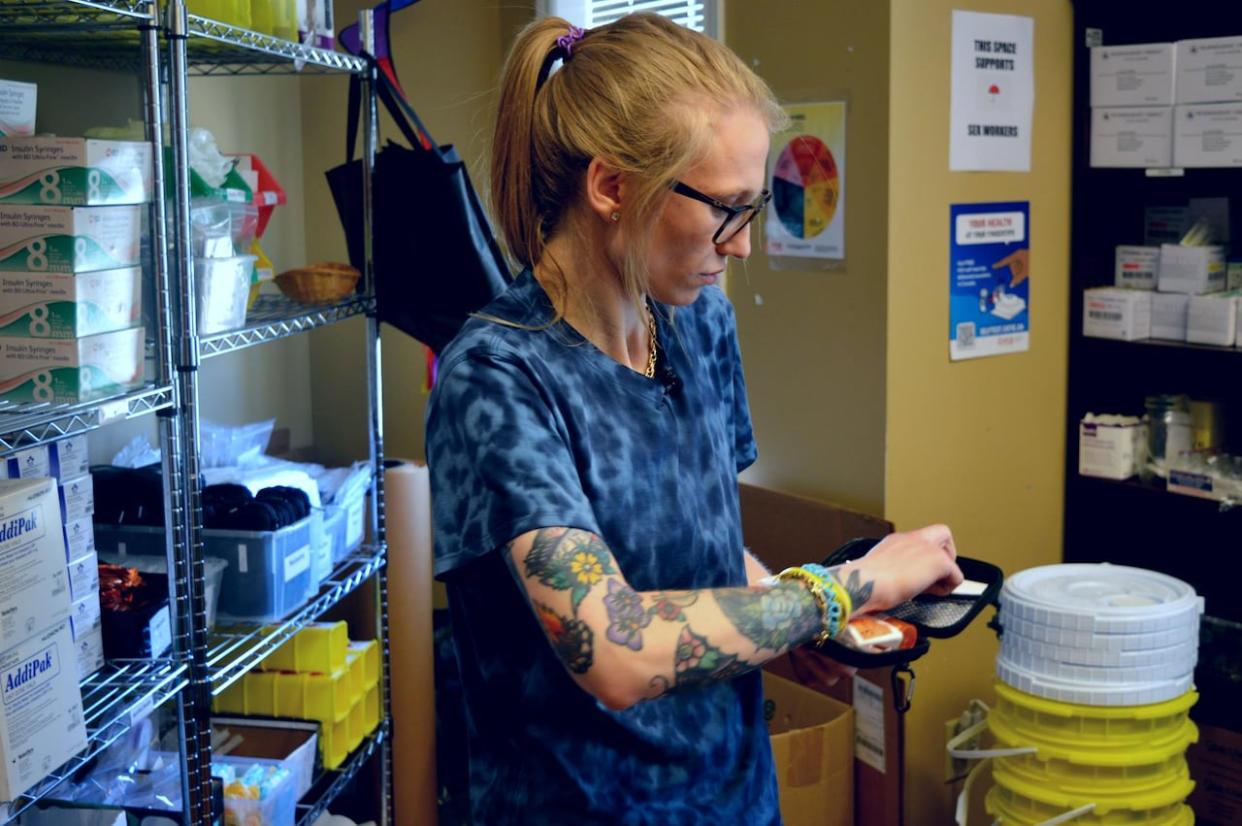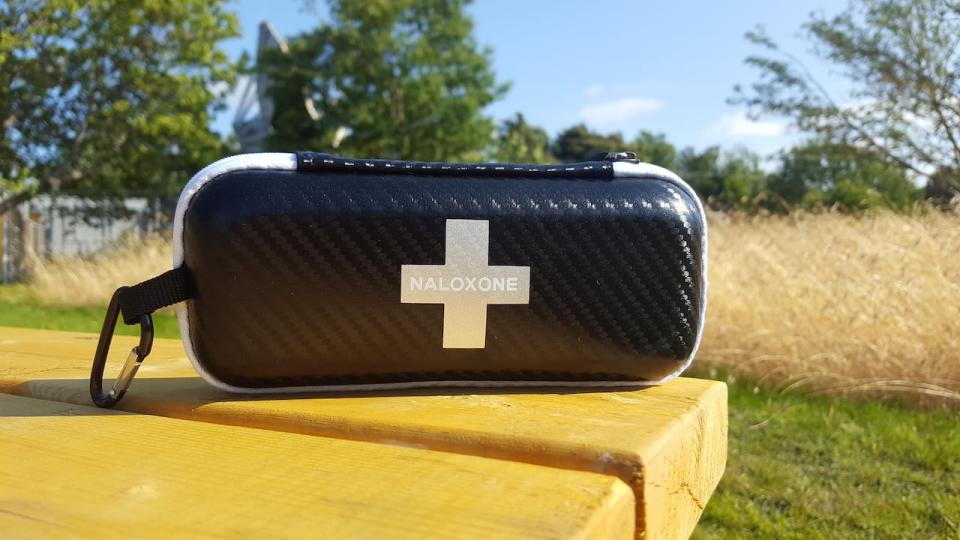Drug safety advocacy group says tainted cocaine is Newfoundland's new reality


Emily Wadden, a program manager with the Safe Works Access Program in St. John's, says the province's drug supply is increasingly toxic. (Malone Mullin/CBC)
Following a warning from the Newfoundland and Labrador Centre on Substance Abuse that cocaine in central and western Newfoundland has been tainted, a St. John's drug safety advocacy group says alerts should be in place all the time.
Emily Wadden, program manager of the Safe Works Access Program St. John's, says the province's drug supply is getting more toxic.
"This is the reality now 24/7. They can choose to put out a drug alert after they hear of a couple deaths — however, this needs to be the assumption going forward," Wadden told CBC News on Wednesday.
The alert was issued Monday after the Canadian Community Epidemiology Network on Drug Use received reports that tainted cocaine had resulted in increased harm, including overdose and death. The warning said other substances, including opioids like fentanyl, may be in the drug.
Wadden wasn't surprised.
"You can't assume anymore that your drugs that you bought or you know the drugs you have aren't mixed with anything. Nobody can say that for sure," she said.
Drug deaths on the rise
Wadden said SWAP had been waiting for the toxic drug supply to hit Newfoundland and Labrador as it has elsewhere in Canada.
Drug-related deaths in the province nearly doubled in 2023 over the previous year, according to numbers from the Office of the Chief Medical Examiner.
There were 73 drug-related deaths across the province last year, a 97 per cent increase from the 37 cases of accidental drug deaths in 2022.
Cocaine was the biggest killer, accounting for 34 deaths, followed by 13 deaths due to benzodiazepines, 11 deaths from alcohol and nine from fentanyl.

SWAP distributed more than 5,000 naloxone kits from April 2023 through March of this year. (Henrike Wilhelm/CBC)
As the deaths increase, so does SWAP's distribution of naloxone kits.
From April 2023 through the end of March of this year, SWAP distributed 5,024 naloxone kits, a 139 per cent increase from the same frame a year earlier.
"It doesn't matter if you use it once a day, 10 times a day or once a year. This can happen to anybody at any point because this is all across the province's entire drug supply," Wadden said.
'No FDA standards'
Wadden blames a lack of regulations, as Canada's Food and Drugs act applies to legal substances.
"There are no FDA standards in drug dealing," Wadden told CBC News.
Dealers often sell more than one drug, and it's easy for cross-contamination to take place between substances, she said, but it's unlikely local dealers are mixing substances like cocaine and fentanyl intentionally. Killing off the customer base is bad for business, she said.
"No dealer here is wasting two types of drugs to mix them together and give somebody something that they didn't want because that's bad business and it is only going to drive customers elsewhere."
Safety tips
SWAP focuses on harm reduction rather than drug abstinence. With safe drug use as a priority for the program, Wadden recommends people contact a trusted friend when using drugs alone to "remote spot" them.
Remote spotting happens when a person using drugs lets someone else know they are using. If they don't answer a check-in text within a certain time, they treat the situation as an emergency.
She also recommends people use drug test strips, even though the results aren't always perfect, using the example of a chocolate chip cookie.
"The chips aren't necessarily evened out in the cookie. Some parts of that cookie might be loaded with chocolate chips, whereas another quarter of it may have none, so if you test that quarter with no chocolate chips, well, it's going to come back obviously negative. But you just missed the chocolate chips," Wadden said.
SWAP also recommends individuals carry naloxone kits on them.
"We would rather you have a naloxone kit in your book bag or your purse or just on your person and never have to use it, than to be in a situation where nobody has it and you can really use it and then come down and get a kit," Wadden said.
"It's better safe than sorry."
Download our free CBC News app to sign up for push alerts for CBC Newfoundland and Labrador. Click here to visit our landing page.

